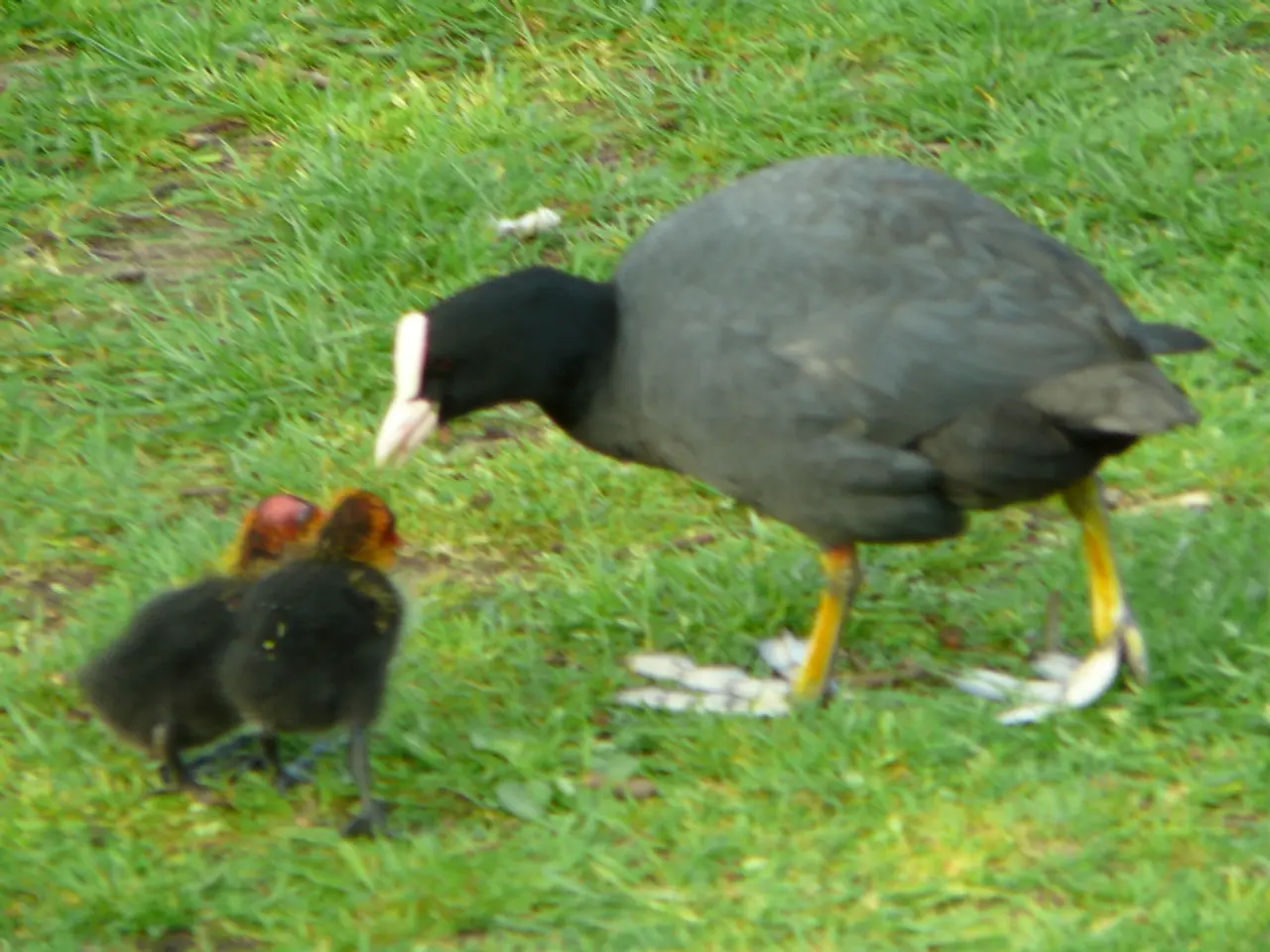Giant Moa Resurrection Follows Dire Wolf De-extinction in Line
In a groundbreaking move, US company Colossal Biosciences has announced plans to de-extinct the New Zealand moa, the giant flightless bird that roamed the country's landscapes for over 5 million years before vanishing around 600 years ago. However, the project, led by the Ngāi Tahu Research Centre in partnership with Canterbury Museum and filmmaker Peter Jackson, is not without its controversies and complexities.
Associate Professor Nic Rawlence, an expert in ancient DNA at the University of Otago, has highlighted several concerns and challenges in the de-extinction process. Genetic complexity, technical limitations, ecological impact, ethical and practical considerations, and funding and support are all factors that require careful consideration before the project can proceed meaningfully.
The genetic complexity arises from the degradation of ancient DNA over time, making it difficult to recover viable genetic material and sequence the DNA accurately. This challenge is compounded by the fact that current technology for cloning or genetically engineering extinct species is still in its infancy, particularly for large, complex animals like the moa.
There are also ecological concerns about reintroducing a species that has been extinct for centuries into modern ecosystems, which may have changed substantially. The potential impact on the ecosystem is a significant consideration, and scientists must ensure that any reintroduction would not disrupt the delicate balance of the environment.
Ethical debates about priorities in conservation, resource allocation, and the long-term welfare of de-extinct animals are prominent challenges. The cost of the moa de-extinction project is not just limited to genetic engineering but also includes continuous conservation efforts. Some argue that the money and resources spent on the moa de-extinction could instead be used for the conservation of New Zealand's currently endangered biodiversity.
Maori have expressed concerns about the project, with some questioning whether Colossal Biosciences have consulted with them and wanting moa bone samples and all DNA extracts and sequence data to remain in New Zealand. There are worries about the potential for bone samples or genetic material to be sent offshore, which could raise issues of sovereignty and cultural heritage.
In the historical habitat of the moa, there was open forest and shrubland in areas of the eastern South Island with kowhai and lancewood. However, concerns about the preservation of enough moa individuals to avoid inbreeding and genetic drift (at least 500) are present.
It is notable that restoring a habitat best suited for the moa is being discussed. Genetically engineering a moa could result in a creature that resembles a moa but may not be a moa in essence. The moa's closest relation is the tinamou, a small flying bird in South America, and scientists would have to go back 60 million years to find a common ancestor between the two.
While the idea of bringing back the moa is exciting, it requires careful consideration of these scientific, ethical, and ecological challenges before the project can proceed meaningfully. The journey towards de-extinction is a complex one, filled with uncertainties and obstacles, but the potential rewards are significant. As the project progresses, the hopes and concerns of the public, scientists, and Maori will continue to shape the conversation around this ambitious endeavour.
- The complexities in the de-extinction process of the New Zealand moa, as led by Colossal Biosciences, extend beyond genetic complexity and technical limitations, also encompassing ecological impact, ethical concerns, and financial support.
- The de-extinction project's funds are not limited only to genetic engineering but also involve continuous conservation efforts, sparking debates about whether resources could instead be allocated towards the conservation of New Zealand's endangered biodiversity.
- Maori have raised concerns about the moa de-extinction project, expressing a need for adequate consultation and advocating for any moa bone samples and DNA extracts to remain within New Zealand.
- In the historical habitat of the moa, open forest and shrubland with kowhai and lancewood thrived. However, questions persist about preserving enough moa individuals to avoid inbreeding and genetic drift.
- As the moa de-extinction project progresses, it becomes increasingly apparent that discussions surrounding this ambitious endeavour will continue to evolve, involving not only science and technology but also education, general news, lifestyle, business, finance, sports, and environmental science.




